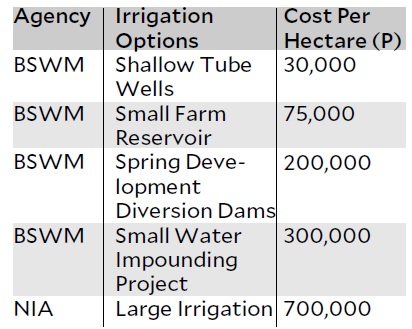Climate change and water
With climate change, the water crisis can become worse. As of Dec. 17, Typhoon “Urduja” has recorded 31 deaths. During the past year of climate change, deaths from water-related causes have reached 73 a day.
There are times when water is everywhere, and water is nowhere. In the case of Biliran, water was everywhere, causing landslides. In the previous case of Kidapawan, water was nowhere because of inefficient irrigation. Both cases resulted in disaster.
On Dec. 13, the Climate Change Committee of the public-private Philippine Council of Agriculture and Fisheries (PCAF), an agency of the Department of Agriculture, held its quarterly meeting chaired by Christian Monsod. Part of the agenda was the seven pre-summits leading to the National Water Roadmap and Summit to be held early this year.
A leader from the five-coalition Agri-Fisheries Alliance (AFA) lamented the lopsided representation during the meeting. This was because presidents of private sector organizations participated, but only one director of a government agency was present.
On the same subject of representation, the Bureau of Soils and Water Management was present, but not the National Irrigation Authority. However, since PCAF is concerned with the whole of agriculture and not just DA activities, NIA may be even more important than BSWM because of its much larger budget. For 2018, NIA has more than P40 billion, while BSWM has less than P3 billion. NIA handles large irrigation, while BSWM does the smaller ones.
Consider the table below:
Article continues after this advertisementFor the last 20 years, the National Economic Development Authority has been advocating more use of small irrigation. This has a higher return of investment, quicker turnaround, and less complaints of alleged corruption because of greater transparency. But today, BSWM has less than 10 percent of NIA’s budget.
BSWM has a much lower cost per hectare than NIA. Furthermore, repairing and rehabilitating many of these small irrigation systems has a much higher return on investment compared to large irrigation. Unfortunately, a very small part of the budget is spent on this.
The farmers, who both agencies serve, want to make sure that the limited water budget is used efficiently. But since each agency reports to a different secretary, there appears to be no coordinated synergistic water plan agreed in a holistic way by both agencies.
The absence of NIA in the recent Climate Change Committee meeting is an indication of this. The committee has therefore passed a resolution to request a joint presentation of a NIA-BSWM synergistic wholistic water plan that many in the committee believe does not yet exist.
It is hoped that an integrated water plan approved by both agencies will decrease our 73 a day death rate from water-related causes. We can then begin a more strategic and focused water initiative for agriculture in this challenging time of climate change.
